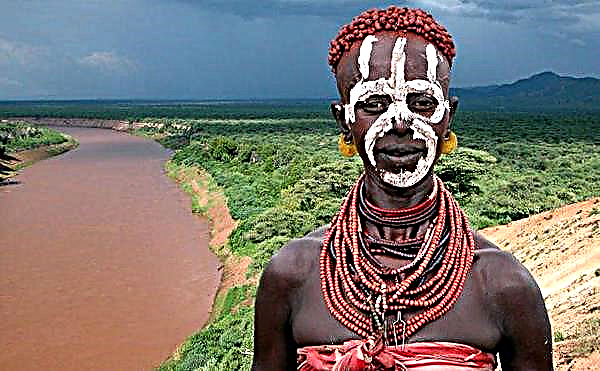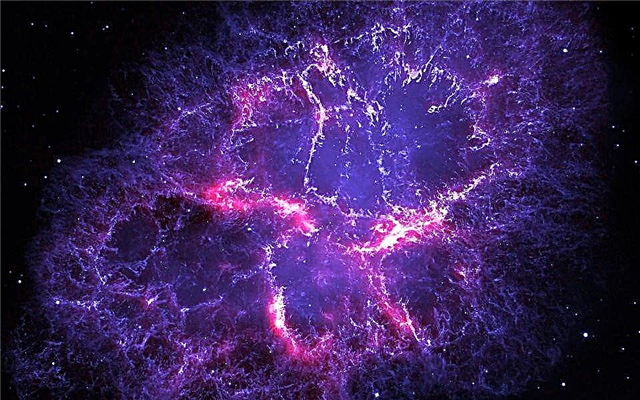Crystals and mirrors are full of charm and always attracted people to themselves. Even in children's fairy tales, we read about beautiful crystal palaces, slippers, magic mirrors and the like.
But what if you want to get into a real glass or crystal place? Yes, it is possible, and we will show and prove it in the top 10 of the most crystal-mirror places on Earth.
10. Mirror Lake, Russia
 This glacial lake, located in the Vyborg district of the Leningrad region, offers a beautiful, almost perfect reflection of the surrounding plants, animals and even clouds. In depth, it reaches 49 meters and is very rich in fish (pike, zander, perch, ruff, etc.).
This glacial lake, located in the Vyborg district of the Leningrad region, offers a beautiful, almost perfect reflection of the surrounding plants, animals and even clouds. In depth, it reaches 49 meters and is very rich in fish (pike, zander, perch, ruff, etc.).
On the shore of the lake there is a recreation center, DOL "Zerkalny".
There is an urban legend that on one of the two islands located on the lake, a person settled down who arranged an underground dwelling for himself. And the entrance to it is disguised as a large boulder of the ice age.
9. Glossy hills (or Glass Mountains), USA
 The slopes of Glossy Hills in northwestern Oklahoma are abundantly dotted with selenite crystals. As if an unknown force scattered fragments of huge glass around. And now they shine, reflecting sunlight.
The slopes of Glossy Hills in northwestern Oklahoma are abundantly dotted with selenite crystals. As if an unknown force scattered fragments of huge glass around. And now they shine, reflecting sunlight.
Similar Glass Mountains are found in several other states of the United States, such as California, Oregon, Utah, etc.
8. Five-color Lake, China
 The lake, located in Sichuan, is one of the best local attractions. Its water is rich in calcium carbonate, as well as hydrophytes, which together give a multi-colored effect.
The lake, located in Sichuan, is one of the best local attractions. Its water is rich in calcium carbonate, as well as hydrophytes, which together give a multi-colored effect.
And the ancient tree trunks located at the bottom of the cleanest lake at a depth of five meters form patterns in bright green tones that are visible on the surface of the water through intense shades of azure blue, blackish green, light yellow, etc.
7. Cave of crystals, Mexico
 There are several caves in the world whose name contains the word "crystalline". However, a cave of crystals or a giant crystalline cave, located under the Mexican city of Nike, stands apart from them. And it is considered one of the most beautiful crystalline places in the world.
There are several caves in the world whose name contains the word "crystalline". However, a cave of crystals or a giant crystalline cave, located under the Mexican city of Nike, stands apart from them. And it is considered one of the most beautiful crystalline places in the world.
It is filled with giant glassy crystals of selenite, and most of the cave has not yet been explored, since even trained people find it difficult to withstand the heat inside the cave for more than ten minutes.
Under the cave is a magma cavity. Thanks to magma, groundwater was heated and saturated with a large amount of gypsum and other minerals. For hundreds of thousands, or even millions of years, the cave was filled with a hot solution of minerals. At the same time, the temperature in it remained stable (from 54 to 58 degrees), and the crystals could grow unhindered.
But the crystals are destroyed in the air, so the researchers of the Nike Cave are trying to document this geological object now.
6. Lake Huron, North America
 One of the five Great Lakes of North America lies on the border between Canada and the United States. When the continental glaciers retreated (and this happened closer to the end of the last ice age, about 11.7 thousand years ago), then melting ice, presumably, led to the formation of this lake.
One of the five Great Lakes of North America lies on the border between Canada and the United States. When the continental glaciers retreated (and this happened closer to the end of the last ice age, about 11.7 thousand years ago), then melting ice, presumably, led to the formation of this lake.
Thousands of ships sank in Huron, as well as in four other Great Lakes since the 17th century, when North America was actively colonized. In the shallow waters of the lake, you can still see the wreckage of ships that are forever frozen beneath the surface of clean, clear water.
5. Kungur cave, Russia
 Ice caves can be found in the coldest regions of the world, such as Iceland and Alaska. They are covered with perennial ice, which takes various bizarre shapes and forms natural sculptures.
Ice caves can be found in the coldest regions of the world, such as Iceland and Alaska. They are covered with perennial ice, which takes various bizarre shapes and forms natural sculptures.
However, only 10 of the most impressive caves in the world were worthy to be included in the Forbes reputable publication in 2011. And one of them was the Kungur cave, which embodied all the cold beauty of nature. The most impressive part of the cave is the Diamond Hall, in which the illumination helps to reflect and refract the light of the “crystal coat”, filling the room with mysterious azure shades.
At the moment, the Kungur cave is the only gypsum cave in the world with extensive glaciation and the seventh gypsum cave in length.
4. Hot Springs in Yellowstone National Park, USA
 It will be very sad if Yellowstone - the most dangerous volcano in the world wakes up. In addition to arranging a “long night” for humanity, it will destroy the fragile beauty - more than 10,000 hot springs and geysers located in Yellowstone National Park.
It will be very sad if Yellowstone - the most dangerous volcano in the world wakes up. In addition to arranging a “long night” for humanity, it will destroy the fragile beauty - more than 10,000 hot springs and geysers located in Yellowstone National Park.
Some of them have strikingly vibrant colors that seem almost unnatural and even psychedelic. This is due to the presence of algae in clean and clear water. The most famous sources are Norris Cistern Spring, Grand Prismatic Spring and Glory Pool.
3. Glass Beach, USA
 If you want to look at one of the most beautiful beaches in the world, head to California. There, next to the Fort Bragg garrison, is a beach covered in a kaleidoscopic abundance of sea glass. These multi-colored glass pieces were formed as a result of the activities of local residents. Which of them, dumping garbage into the coastal zone, such as glass, household appliances and even vehicles, would have thought that nature would accept all this and remake it in its own way?
If you want to look at one of the most beautiful beaches in the world, head to California. There, next to the Fort Bragg garrison, is a beach covered in a kaleidoscopic abundance of sea glass. These multi-colored glass pieces were formed as a result of the activities of local residents. Which of them, dumping garbage into the coastal zone, such as glass, household appliances and even vehicles, would have thought that nature would accept all this and remake it in its own way?
2. Pamukkale, Turkey
 Seventeen unique thermal pools of Pamukkale are among the top 20 most unusual places on Earth. In daylight, you might think that they look like shiny marble slabs or even ice. The temperature in these sources ranges from 35 ° C to 100 ° C.
Seventeen unique thermal pools of Pamukkale are among the top 20 most unusual places on Earth. In daylight, you might think that they look like shiny marble slabs or even ice. The temperature in these sources ranges from 35 ° C to 100 ° C.
Pamukkale waters have healing properties, and many people with diseases of the heart and musculoskeletal system come here. And according to one of the local legends, Cleopatra herself bathed in the sources of Pamukkale. You can even be shown the Cleopatra pool, and whether you believe the legend or not, decide for yourself.
1. Salar de Uyuni, South America
 This is the largest salt marsh in the world, formed in southwestern Bolivia from a rich reserve of salt left after the drying of a prehistoric salt lake called Minchin.
This is the largest salt marsh in the world, formed in southwestern Bolivia from a rich reserve of salt left after the drying of a prehistoric salt lake called Minchin.
In dry weather, the Salar de Uyuni region is an endless white space. But in the rainy season, the plain turns into a giant mirror. With no place to drain, rainwater covers the plain, and dazzling water a few centimeters thick reflects the sky, clouds, flocks of flying flamingos and any other creature or phenomenon above.
Salar de Uyuli forms the largest natural mirror in the world, and it can be seen even from space.












